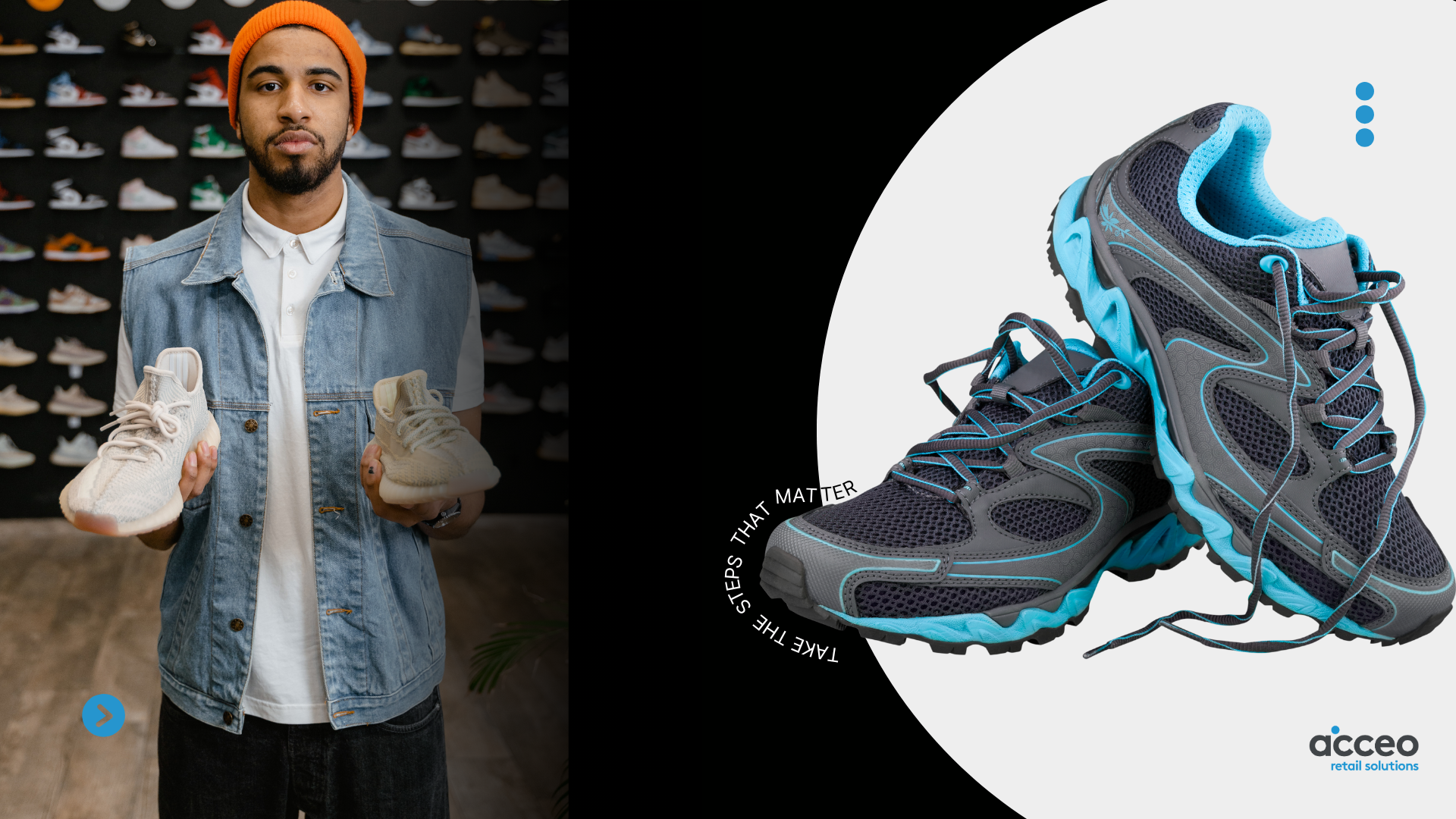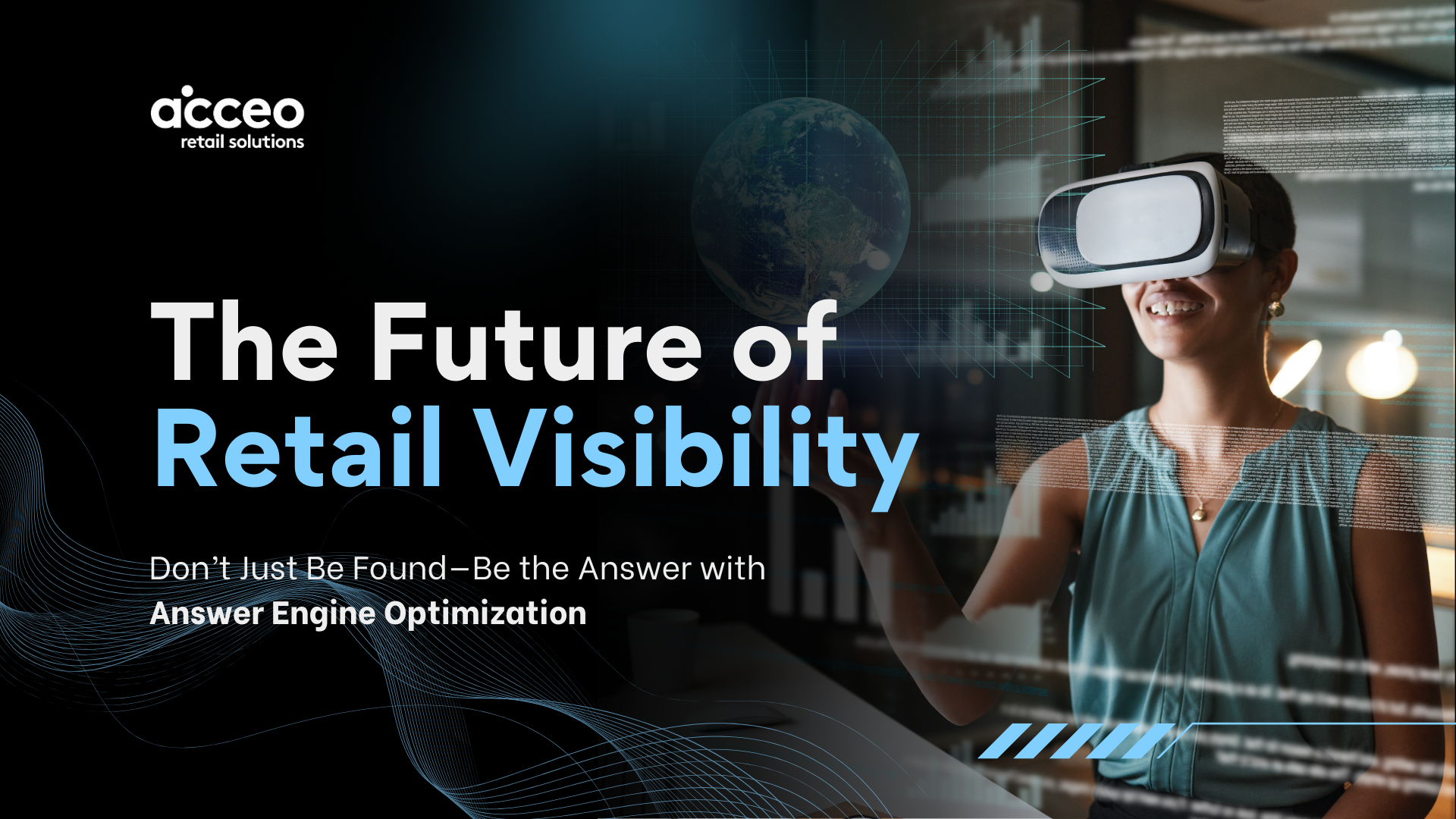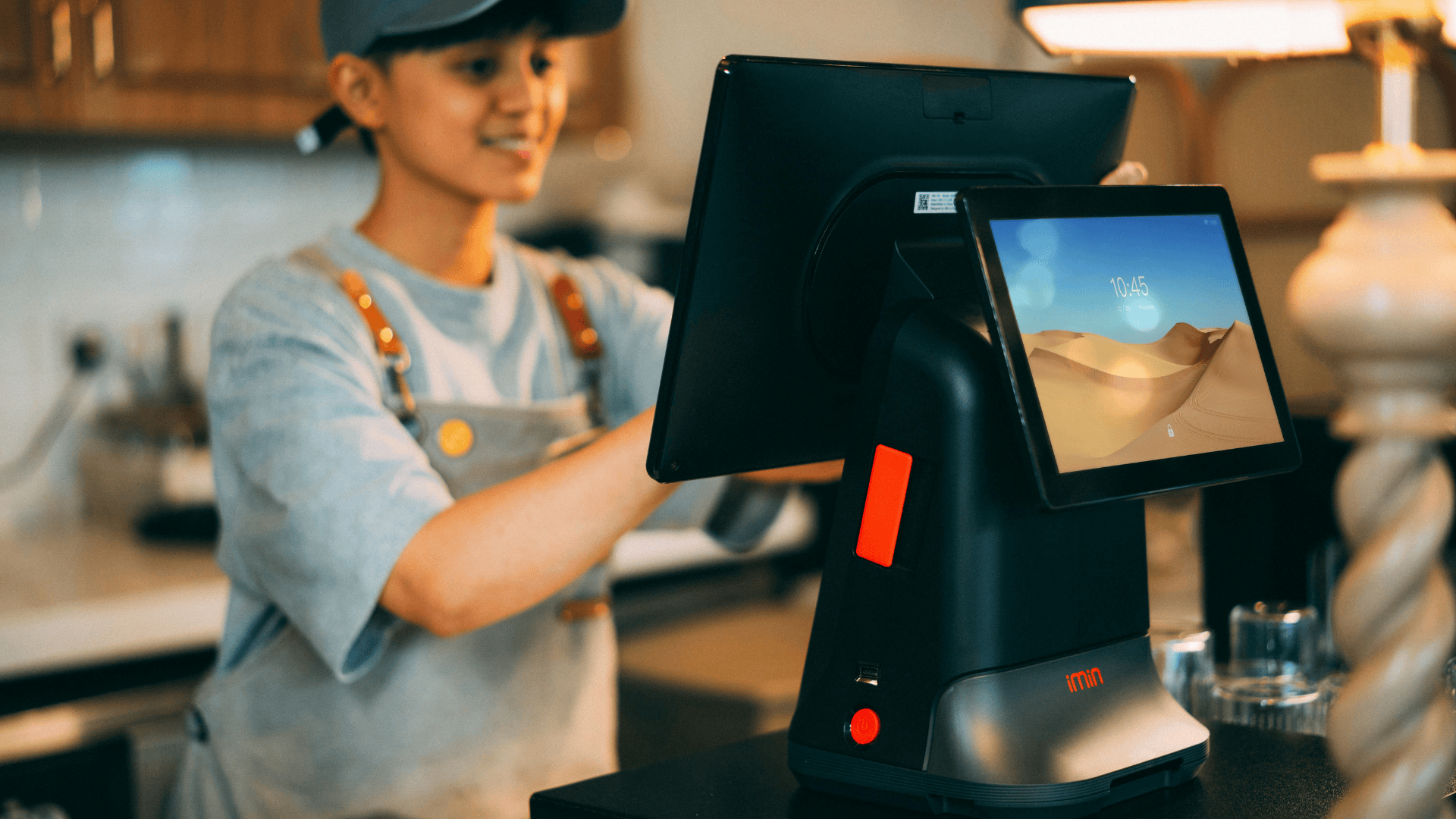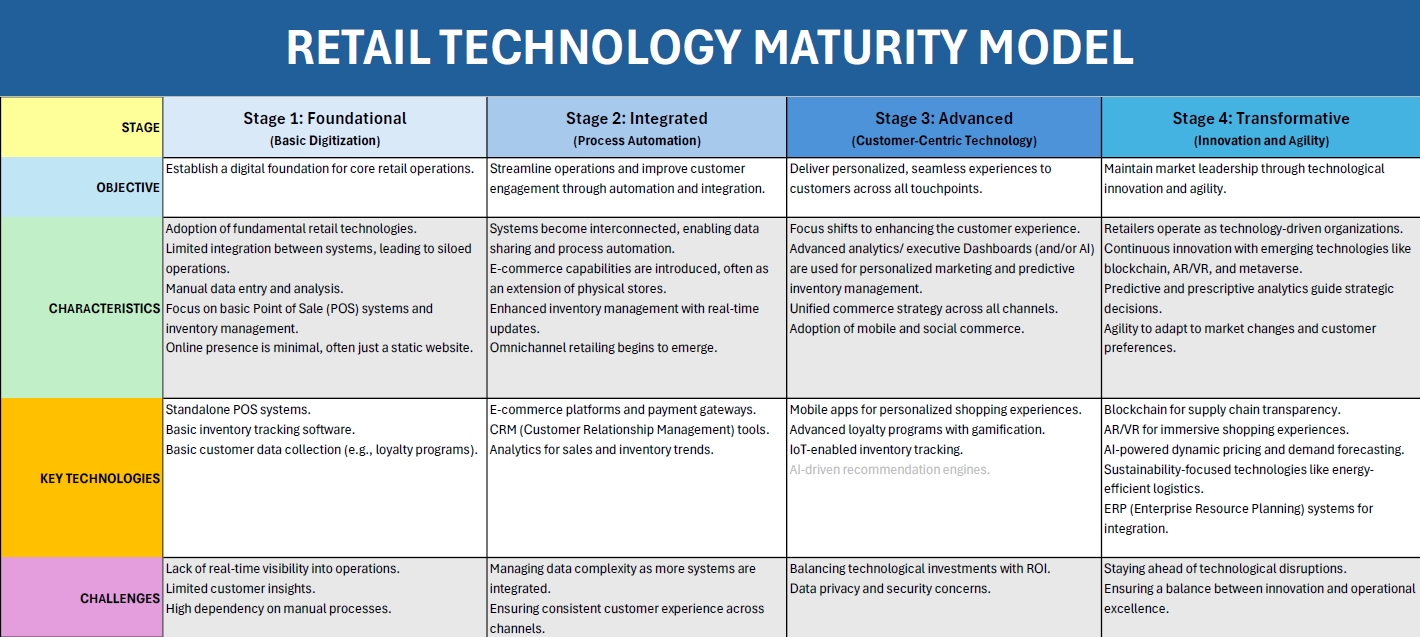Retail’s Best-Kept Secrets: What’s Hiding Behind Omnichannel Holiday Wins

The holidays no longer happen in a single channel. Shoppers browse online, compare on mobile, purchase in-store, and expect to return anywhere. The challenge isn’t volume it’s visibility. How can retailers manage inventory, pricing, and customer data across every touchpoint when everything moves faster than ever?
The answer lies in unified commerce. A seamless connection between digital and physical retail. For enterprise and multi-location retailers, systems like ACCEO Retail-1 make this possible by creating a single, real-time operational view that keeps every channel synchronized during the most demanding season of the year.
The Reality of the Modern Shopper
More than 70% of North American shoppers now engage with multiple channels before making a purchase, and omnichannel customers spend 15–30% more per transaction. That shift means retailers must think holistically about inventory and experience. What happens online directly impacts what happens at the till.
ACCEO Retail-1 bridges those divides by integrating stores, warehouses, and eCommerce systems under one data structure. When an item sells online, inventory updates everywhere. When a price changes at headquarters, every channel reflects it instantly. This synchronization prevents overselling online or running out of stock in-store which is one of the most common holiday frustrations
Efficiency Through Integration
During the holidays, timing is everything. A disconnected system can delay order fulfillment by hours, while a unified platform processes orders in real time. ACCEO Retail-1’s architecture supports that responsiveness, enabling features like “buy online, pick up in-store” and centralized returns without operational friction.
That same integration also simplifies promotions like cross-channel discounts, bundled offers, and tiered pricing all centrally managed. For marketing teams, this alignment means consistency across ads, POS, and eCommerce thereby reducing customer confusion and improving brand trust.
The Aftermath: Turning Holiday Data into Strategy
Once the rush fades, omnichannel retailers face another challenge of making sense of it all. Which campaigns worked? Which stores outperformed? Which SKUs led to returns?
ACCEO Retail-1’s analytics suite helps leadership answer these questions. It consolidates data from every source into dashboards that show not just what sold, but why. These insights guide assortment planning, vendor negotiation, and marketing spend for the year ahead.
From Seasonal to Sustainable Success
The most sophisticated retailers view the holidays not as a disruption, but as a live stress test of their entire ecosystem. ACCEO Retail-1 provides the structure to withstand that test by offering real-time visibility, centralized control, and customer intelligence that extends beyond December.
In an era where online and in-store boundaries blur, unified commerce isn’t a luxury, it’s the new baseline for retail success. Those who invest in integration now are not just ready for the next holiday season; they’re ready for the future of retail itself.
Discover what makes us different.
Book your personalized demo today and find out why leading retailers are finding success with Retail-1.
Call us at 1 888-353-5888 or fill out the form to schedule a demo with our experts.
Unlock Footwear Retail Success in 5 Simple Steps with Powerful Business Intelligence

For footwear retailers, staying ahead in a competitive market requires more than just great footwear collections; it demands smart, informed decisions that align with customer preferences and market trends. However, many footwear chain retailers still hesitate to embrace robust business intelligence (BI) tools due to fears of complexity and high effort.
The good news is, unlocking significant business growth with insightful analytics doesn’t have to be difficult. With ACCEO Retail-1’s intuitive business intelligence solutions, transforming your shoe store into a thriving retail powerhouse is straightforward. Here’s how to effortlessly leverage these tools in just five simple steps:
Step 1: Gain Visibility in Real-Time
Your first step to unlocking retail success for your shoe store begins with clarity. ACCEO Retail-1’s BI tools provide real-time analytics dashboards, delivering instant visibility into your store’s performance. See detailed sales trends, popular product lines, inventory levels, and even identify slow-moving stock. With accurate, instant insights, you’ll never miss an opportunity to optimize inventory and capture potential sales.
Step 2: Harness Customer Insights
Understanding your customers deeply is key to sustainable growth. ACCEO Retail-1 makes customer analytics straightforward by analyzing buying behaviors, preferences, and shopping frequencies. Easily segment your customer base to create targeted promotions, boosting loyalty and encouraging repeat purchases. The simplicity of the tools means actionable insights are always within reach, allowing you to effortlessly tailor your offerings.
Step 3: Simplify Inventory Management
Efficient inventory management can dramatically impact your shoe store’s profitability. With ACCEO Retail-1’s powerful forecasting tools, accurately predicting inventory needs becomes effortless. Say goodbye to overstocking and understocking woes. The system’s predictive analytics helps maintain optimal stock levels, reducing storage costs and improving cash flow with minimal effort.
Step 4: Enhance Operational Efficiency
Streamlining store operations frees your resources to focus more on growth and less on manual, repetitive tasks. ACCEO Retail-1 automates reporting and provides instant access to essential operational metrics, helping you quickly identify and resolve bottlenecks. You can seamlessly manage staff scheduling, monitor transaction speed, and ensure a smooth in-store experience, all through a simplified BI interface.
Step 5: Make Confident Decisions
Finally, ACCEO Retail-1 empowers shoe retailers to make informed, data-driven decisions with confidence. Its intuitive analytics transforms raw data into clear, understandable reports that highlight trends, risks, and opportunities. Whether it’s deciding on new product lines, expanding your store, or running a marketing campaign, you can act decisively, knowing you’re backed by comprehensive data insights.
Why Effortless Matters
Real-world results underscore the effectiveness of ACCEO Retail-1’s solutions. For instance, Running Room experienced remarkable sales improvements after deploying Retail-1’s Endless Aisle feature, which now accounts for 5.5% of their global sales. Significantly, these are sales that might otherwise have been lost, directly reflecting real-time customer demand and allowing immediate and targeted inventory adjustments.
Complexity should never be a barrier to retail excellence. The beauty of ACCEO Retail-1’s business intelligence lies in its ease of use. Retailers of any experience level can quickly grasp powerful analytics capabilities, enabling immediate and sustained business improvements. By reducing the effort required to gain valuable insights, you are empowered to focus more on your customers, products, and growth opportunities.
Take these simple yet powerful steps with ACCEO Retail-1 and unlock your shoe store’s full potential. Remember, the path to retail success doesn’t have to be complicated. With the right BI tools, it becomes an effortless journey toward greater profitability and market leadership.
Related posts
Discover what makes us different.
Book your personalized demo today and find out why leading retailers are finding success with Retail-1.
Call us at 1 888-353-5888 or fill out the form to schedule a demo with our experts.
AEO vs. SEO: Preparing Retailers for the Next Evolution in Digital Visibility

In the retail sector, visibility has always been the foundation of growth. Historically, Search Engine Optimization (SEO) has been the primary strategy to ensure that customers find businesses online. However, as consumer behavior evolves and artificial intelligence (AI) technologies reshape the way information is delivered, a new concept is emerging: Answer Engine Optimization (AEO).
Retailers who understand the distinction between SEO and AEO—and how to leverage both—will be better positioned to meet modern consumer expectations and secure a competitive advantage.
Understanding SEO
Search Engine Optimization (SEO) is the discipline of improving a website’s visibility on traditional search engines such as Google and Bing. The goal is to rank higher on search engine results pages (SERPs) and attract traffic through:
- Keyword-driven product descriptions and category pages.
- Technical improvements such as mobile responsiveness and site speed.
- Building domain authority through backlinks.
- Publishing high-quality, intent-focused content.
SEO remains a critical practice, as it influences how potential customers discover a retailer’s website when browsing online.
What is AEO?
Answer Engine Optimization (AEO) expands on SEO by preparing content for AI-powered answer engines. Unlike search engines that present multiple links, answer engines are designed to provide direct, conversational responses. Examples include:
- Voice assistants such as Alexa, Siri, and Google Assistant.
- AI-driven platforms such as ChatGPT or Bing AI.
- Intelligent digital assistants within retail applications.
In practical terms, AEO ensures that when a customer asks, “Where can I find same-day pickup for school supplies near me?”, your business is positioned as the precise and trusted answer.
Why AEO is Crucial for Retailers
Consumer behavior is shifting from browsing to asking. This transformation has several implications for retailers:
- Voice-driven commerce growth: Natural, conversational queries are increasing through voice-enabled devices.
- Demand for precision: Shoppers expect accurate, immediate answers rather than lists of potential sources.
- Local intent dominance: Many queries relate to store hours, stock availability, and proximity.
- AI adoption: As consumers adopt generative AI tools, being discoverable within these environments becomes essential.
Retailers who embrace AEO now will not only improve customer acquisition but also enhance customer trust and brand authority.
Strategies for Leveraging AEO in Retail
To adapt successfully, retailers should consider the following approaches:
- Adopt natural language in content: Reflect conversational patterns in FAQs, product details, and customer support pages.
- Implement structured data (schema markup): This enables AI systems to interpret product, location, and availability data with precision.
- Prioritize local optimization: Ensure business listings are accurate and continually updated, particularly regarding operating hours and stock information.
- Develop robust FAQs and knowledge hubs: Anticipate customer questions and provide concise, authoritative answers.
- Integrate AI-driven retail solutions: Leverage platforms that support omnichannel engagement and are optimized for AI interaction.
Looking Ahead: AEO as a Strategic Imperative
SEO will continue to play a vital role in attracting customers through traditional search engines. However, AEO is rapidly becoming a strategic necessity as consumers turn to AI-powered tools for immediate, reliable answers. By aligning with both SEO and AEO practices, retailers can secure their presence across all digital touchpoints.
Forward-looking organizations are already adopting technology partners who specialize in retail transformation. Companies such as ACCEO Retail Solutions are equipping retailers with the digital infrastructure needed to stay competitive in this evolving landscape—ensuring that when customers ask, the right answer is always within reach.
Discover what makes us different.
Book your personalized demo today and find out why leading retailers are finding success with Retail-1.
Call us at 1 888-353-5888 or fill out the form to schedule a demo with our experts.
How to Use the Retail Technology Maturity Model to Map Your Growth

Introduction
In today’s retail environment, technology is more than a back-office tool – it’s the foundation for growth, customer loyalty, and competitiveness. The challenge is knowing exactly where your business stands today and what steps will take you further.
The Retail Technology Maturity Model Canada is designed to make that journey clear. It gives retailers and their VAR partners a practical way to assess current capabilities, identify challenges, and pinpoint the technologies that will unlock the next stage of success.
Whether you’re planning your own upgrades or helping clients do the same, this model takes the guesswork out of the process.

Stage 1: Foundational (Basic Digitization)
Objective: Establish a digital foundation for core retail operations.
Typical setup:
Standalone POS systems: Limited functionality, but a step up from paper invoices or mechanical cash registers.
Basic inventory tracking: Labour-intensive, non–real-time tools, useful mainly for periodic counts.
Minimal reporting: A few basic metrics, such as daily or monthly sales summaries.
Common pain points:
- Manual sales tracking
- No real-time inventory visibility
- Limited customer data
Typical retailer: Often smaller-volume businesses or new entrepreneurs, cautious about over-investing early on. Customer relationships are personal and transaction-based, with no centralized data to guide decisions.
Next step: Connect core systems to reduce manual work and eliminate data silos.
Stage 2: Integrated (Process Automation)
Objective: Streamline operations and improve customer engagement through connected systems.
Typical setup:
- POS integrated with e-commerce and payment gateways: Unified online and in-store sales tracking, plus integrated payment data.
Analytics and advanced reporting: Data-driven insights into sales trends, inventory performance, and purchasing behaviour, enabling proactive decision-making.
Multi-location inventory management: Real-time tracking across stores or channels, including online.
Common pain points:
- Disconnected online/offline channels
- Manual data entry and reconciliation
- Inventory mismatches
Typical retailer: Small to mid-sized businesses such as boutiques, sporting goods stores, or garden centres. Often operating both a physical location and an e-commerce site (e.g., Shopify).
Next step: Use integrated data to enable personalized marketing and more precise inventory control.
Stage 3: Advanced (Customer-Centric Technology)
Objective: Deliver personalized, seamless experiences that build loyalty and increase lifetime customer value.
Typical setup:
Customer profiles: Purchase history and preferences stored for targeted offers, loyalty programs, and enhanced customer experiences.
Mobile apps for personalized shopping: Custom recommendations, targeted promotions, loyalty rewards, and real-time, location-based offers.
Targeted promotions and loyalty programs: Campaigns triggered by customer behaviour, often delivering measurable revenue lifts.
Common pain points:
- Limited insight for targeted engagement
- Difficulty personalizing across multiple channels
- Balancing technology investment with returns
Typical retailer: Well-established small and medium businesses optimizing efficiency and customer engagement. For many, this is the highest functionality currently offered by mainstream POS providers.
Next step: Introduce predictive analytics and AI to anticipate customer needs and refine operations.
Stage 4: Transformative (Innovation and Agility)
Objective: Maintain market leadership through innovation and rapid adaptation.
Typical setup:
AI-powered sales forecasting: Predict demand and automate inventory reordering to reduce waste and avoid stockouts.
Blockchain for supply chain transparency: Create a tamper-proof record of a product’s journey, increasing trust, authenticity, and recall efficiency.
AR/VR for immersive shopping: Let customers visualize products in their own space, try on items virtually, or explore digital showrooms.
ERP (Enterprise Resource Planning): Integrate finance, inventory, sales, HR, and purchasing into one platform for real-time visibility and streamlined operations.
Common pain points:
- Keeping pace with market shifts
Staying ahead of emerging technologies
Scaling innovations efficiently
Typical retailer: Large enterprises already use these technologies, but they’re becoming accessible for small and medium businesses. The efficiencies gained, from reduced costs to higher margins, can be game-changing.
How to Use the Model
Retailers: Use this as a self-assessment tool. Identify your current stage, review the challenges, and plan the technology investments that will move you forward.
VARs: Use the model as a framework in discovery conversations to guide clients toward their next milestone.
No matter where you are today, there’s a clear path to greater efficiency, stronger customer relationships, and higher profitability. The Retail Technology Maturity Model is your roadmap, and we’re here to help you navigate it.
Explore the next step in your journey and contact our sales team for a free consultation.
Frequently Asked Questions
Even with a clear roadmap like the Retail Technology Maturity Model, you might still wonder how to apply it to your business. Here are answers to some of the most common questions we hear from small and medium-sized retailers, and from VARs who work with them.
How do I know which stage my business is in?
Look at your current systems and processes. If you’re still relying on standalone POS systems and manual reports, you’re in Stage 1. If your systems talk to each other and you use data to guide decisions, you’re in Stage 2 or beyond.
Do I need to move through every stage in order?
Not necessarily. Some retailers leapfrog stages when they make a major investment in technology. However, skipping essential foundations, like integrating systems before adding advanced customer tools, can create inefficiencies later.
What’s the fastest way to see a return on new technology?
Focus on upgrades that reduce manual work, improve accuracy, and boost customer satisfaction. For many SMBs, moving from Stage 1 to Stage 2 through system integration delivers quick wins in efficiency and sales.
Is Stage 4 realistic for a small or medium business?
Yes. While these technologies were once reserved for large enterprises, they’re becoming more affordable and accessible. AI forecasting, blockchain tracking, and AR/VR experiences are already appearing in SMB-friendly retail software.
How can my VAR help me move to the next stage?
Your VAR can assess your current stage, recommend solutions tailored to your needs, and manage the implementation. They can also train your team to make the most of new tools, ensuring you see measurable results faster.
Related posts
Discover what makes us different.
Book your personalized demo today and find out why leading retailers are finding success with Retail-1.
Call us at 1 888-353-5888 or fill out the form to schedule a demo with our experts.




